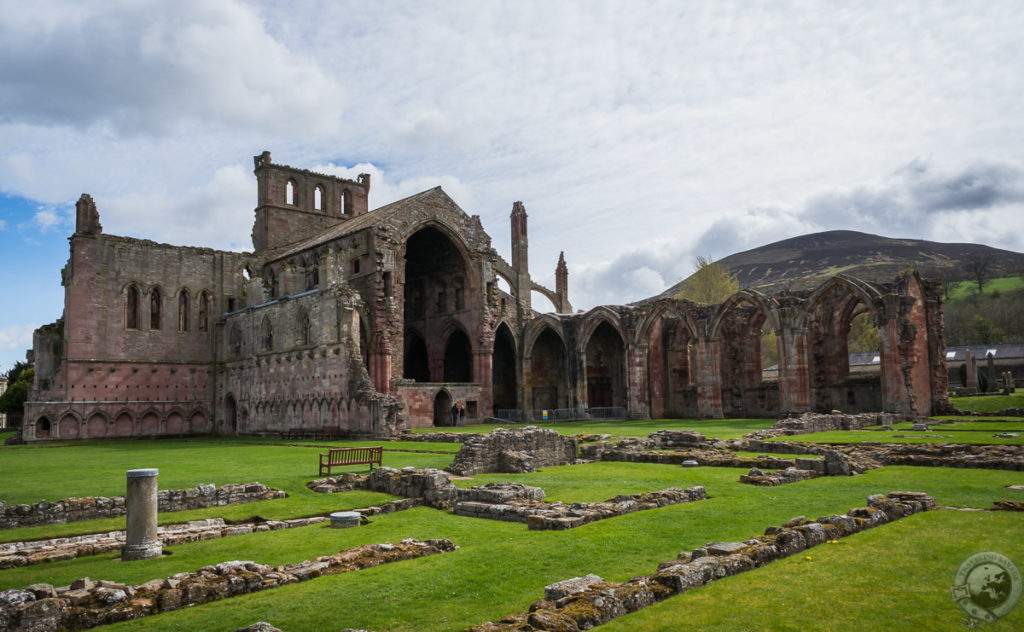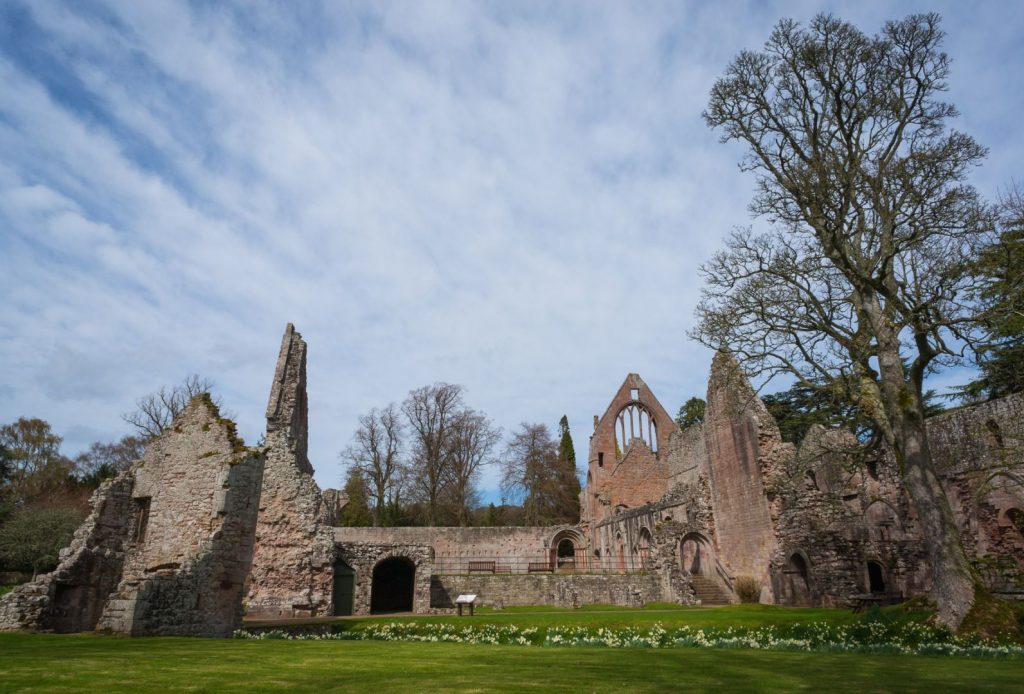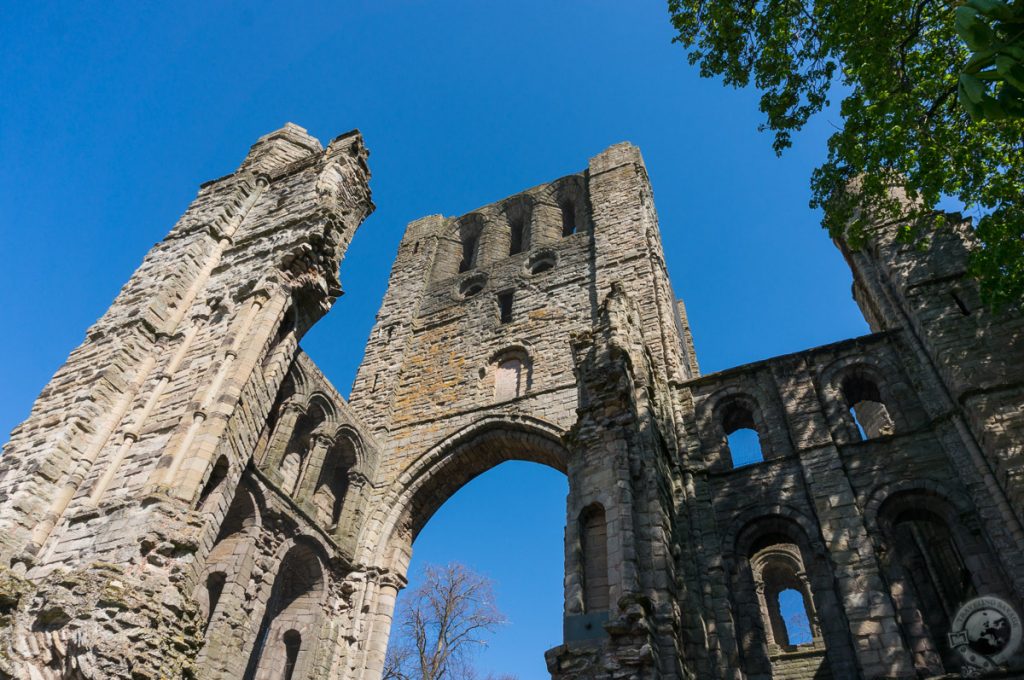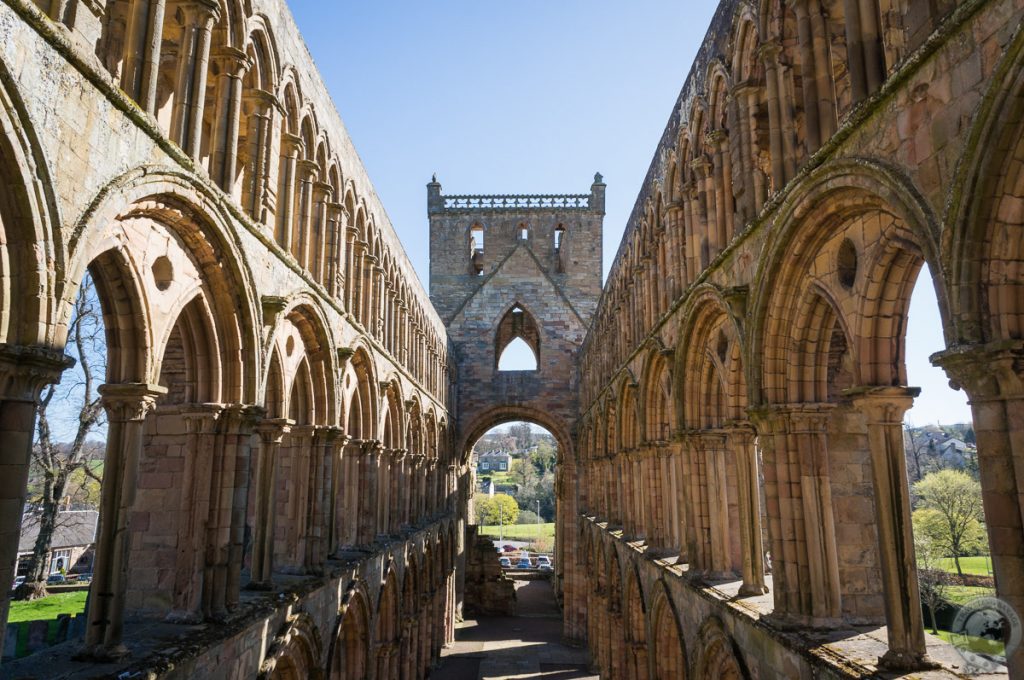The Scottish Borders do not get their fair share of the tourism limelight. When visitors to Scotland begin scripting their itineraries, the mythic grandeur of the highlands unfurls to the north of Edinburgh and Glasgow and so go their travels. All too often that span of land between Scotland’s cities and the English border are struckthrough and not even given an honest thought.
I understand.
I’ve helped dozens of people plan their trips to Scotland in the past six months, and it’s hard to find the time to go south when most of Scotland lies to the north. Sometimes all you need is a little encouragement, a compelling reason to tweak that perfect circle tour. And sometimes all you have is a single day.
Here I present to you a day well spent in the Borders taking in all four of the Border Abbeys. The journey requires less than 45 miles of driving, but you’ll want to start early to give each abbey its proper respect.
Melrose Abbey
Begin your journey in Melrose. It is the loveliest town in the heart of the Borders, and it possesses the grandest of the abbeys. The Melrose Abbey we see today was not the first religious structure in the region. This part of the Borders was a religious power as far back as 635 AD, when King Oswald of Northumbria and Aidan, bishop of Lindisfarne, founded Mailros Monastery a couple miles east of the current abbey with monks from Iona.
In 1136, King David I requested the Cistercian monks from Rievaulx Abbey in north Yorkshire to build an abbey in Melrose. The king wanted the abbey built upon the previous monastery, but the monks of Rievaulx bargained for the current placement citing their need for arable farmland, and they spent the next 50 years constructing Melrose Abbey.
Do not skimp on time here. Allow yourself the luxury of wandering through the abbey ruins beneath the wide, Borders sky as the Eildon Hills watch over you.
Dryburgh Abbey
Jump in the car and head southeast to the town of St. Boswells. Turn east, cross the River Tweed, and follow signs to Dryburgh Abbey as the road curls back into a bend of the river. This is a quick drive.
Dryburgh Abbey is the most secluded of the four abbeys, and it was built in 1150 by Premonstratensian monks who hailed from northern France. The land was probably gifted to the order by Hugh de Moreville whose family came from Normandy with William the Conqueror less than a century earlier.
Dryburgh Abbey functioned for just over 400 years and during that time it saw plenty of war and strife. After the Reformation Dryburgh Abbey became a silent place, its stones surely cherry-picked and hauled away to build other structures in the surrounding area. Dryburgh was “rediscovered” in the Nineteenth century by the Romantics who valued and popularized the monuments of the past. Enjoy the quiet contemplation of the ruins where the only sound is the wind in the leaves and the gurgle of the Tweed.
Kelso Abbey
Continue east on pastoral country roads to the town of Kelso, only a 20-minute drive away, where you will find the scant remains of Kelso Abbey amidst the pretty town. To be fair, this is the least compelling of the Border abbeys today, but Kelso Abbey used to be the largest of them all and it retains a shadow of its glory with the remaining west tower looming over town.
Kelso grew up around the abbey, which was founded in 1128 by Tironensian monks who flourished until the Reformation when the Earl of Hertford systematically destroyed the magnificent structure.
Luckily, Kelso is a great spot to grab a bite to eat and admire the passage of the River Tweed even though the abbey itself won’t require much of your time. Consider sating your visceral demands at a place like the Cobbles Inn.
Jedburgh Abbey
After you’ve finished in Kelso, shoot southwest to the town of Jedburgh where you will find the last of the four Border abbeys: Jedburgh Abbey.
King David I chose this site – so close to the English border – in 1138 to give his cross-border foes a taste of his piety and strength. The construction of a high-minded abbey was a long project, and by 1150 there would have stood a small Romanesque church upon painstakingly leveled ground.
By the turn of the century, Jedburgh Abbey would have been subject to a second building phase, one that added the airy ‘clearstory’ to the presbytery in the new Gothic architectural style. This clearstory – the long, raised facades punctuated by countless arches – is the signature of Jedburgh Abbey and one of the earliest examples of Gothic architecture in Scotland. By 1250, more than one hundred years after work started on the abbey, a cloister for the Augustinian monks stood to the south of the church for maximum heat and light in the chill Scottish weather.
Savor the late afternoon sunlight as it lances through Jedburgh Abbey’s clearstory before turning north for the final drive back to Melrose (or wherever you’ll lay your head this night). You’ve done the abbeys in a day and taken in the some of the best of what the Scottish Borders has to offer.





[…] By Keith Savage […]
These are beautiful – visited the borders last May – so amazing
Some of my favorite places in Scotland!
[…] to the M74 running through the center of the country. Here you’ll find sheep-flecked hills, ruined abbeys, the rolling Lammermuir Hills, sandy coastline, and the jewel that is the central Borders. The […]
The history in even the most innocuous corners of Scotland never ceases to amaze me … wonderful photos!
Thanks Will!
[…] right in the heart of the region. The River Tweed bends around town and one of the great, ruined Border abbeys stands right in the center. After exploring the cobbled heart of Kelso I ducked into the lively […]
[…] and near to the highest density of interesting sites the Scottish Borders has to offer. From the abbeys to Abbotsford and Smailholm Tower to Scott’s View, Melrose is the perfect base for your time […]